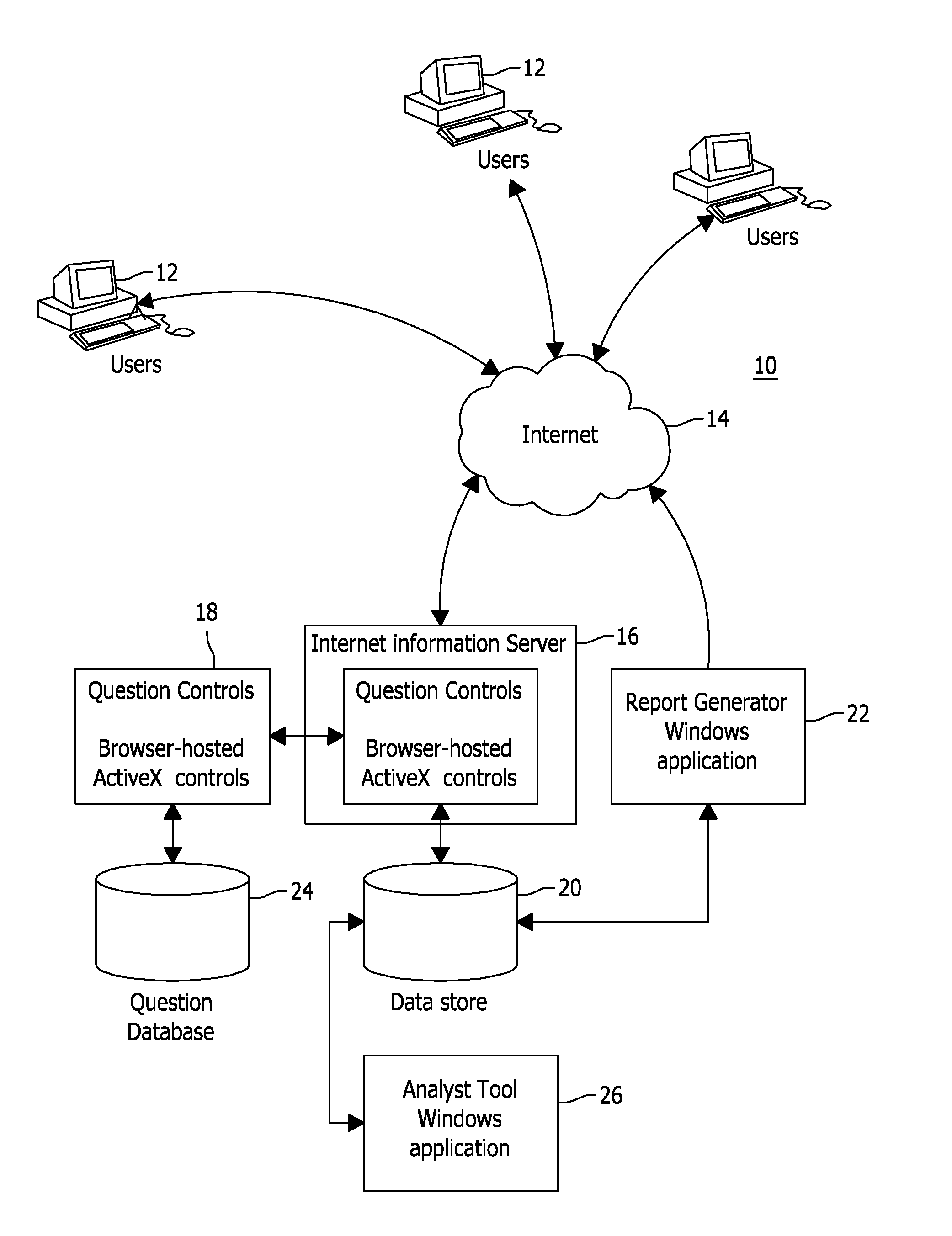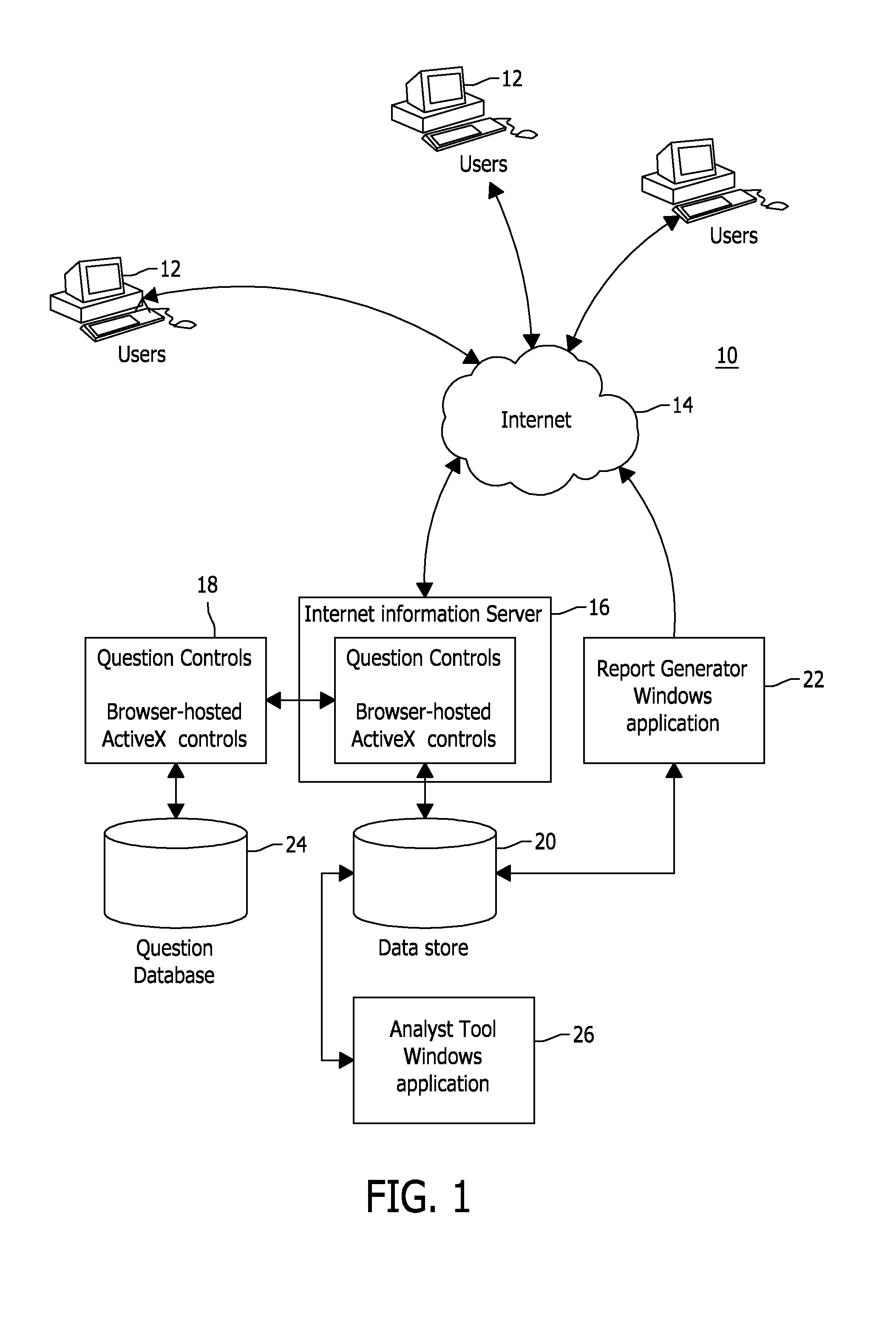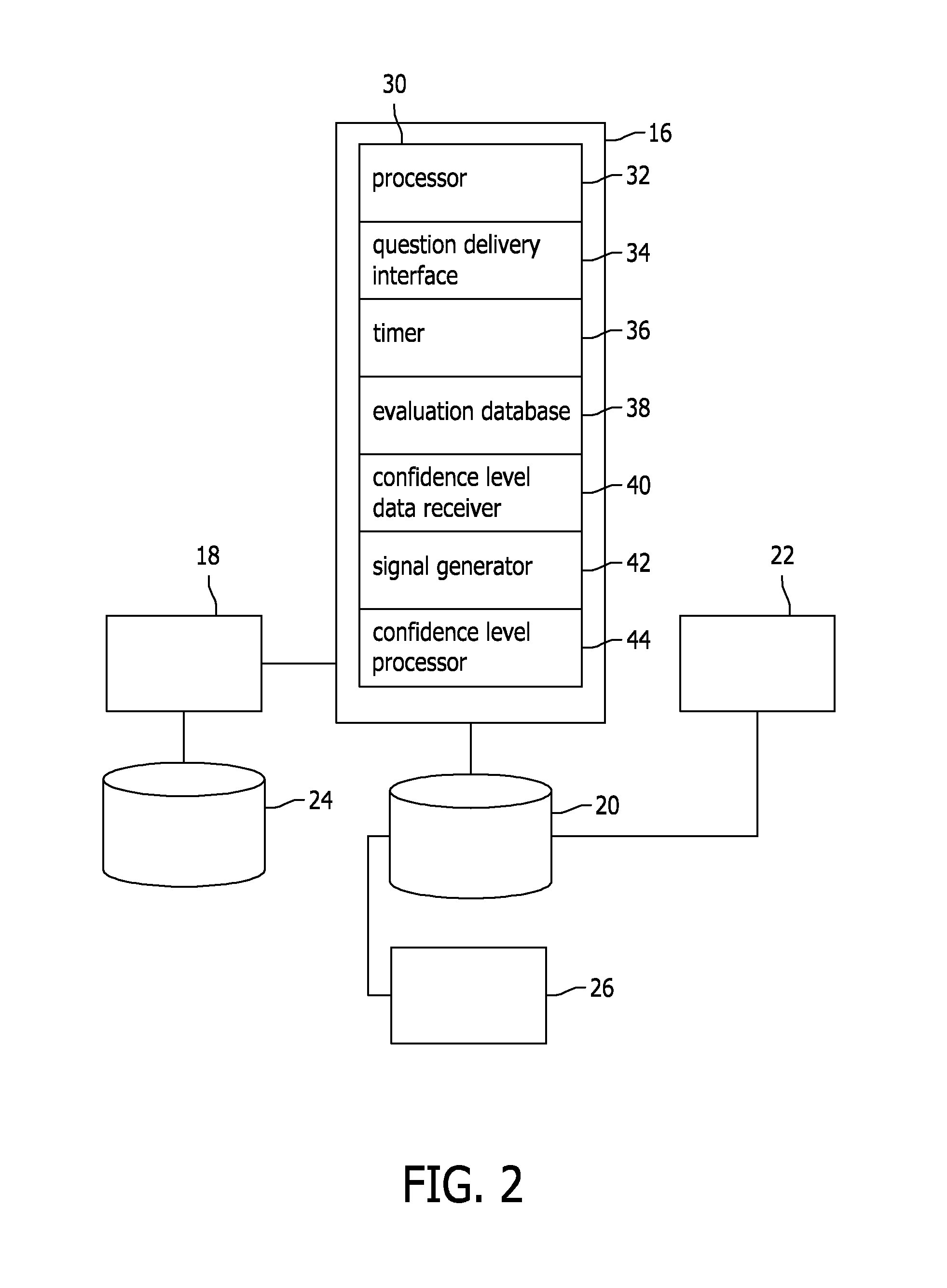Evaluation and Assessment System
a technology of assessment system and assessment method, applied in the field of evaluation system, can solve the problems of superficial and ineffective assessment or testing, ineffective education tool, ineffective training environment, etc., and achieve the effect of accurate determination of competency interval
- Summary
- Abstract
- Description
- Claims
- Application Information
AI Technical Summary
Benefits of technology
Problems solved by technology
Method used
Image
Examples
Embodiment Construction
[0036]The first aspect of the invention, known as Score Time Confidence (STC) will first be described with respect to FIGS. 1 to 5, followed by the second aspect, known as Fitness To Practice (FTP) with respect to FIGS. 6 to 11.
[0037]FIG. 1 is a schematic diagram showing a general environment 10 in which the training evaluation system may be used. A plurality of user terminals 12 are connected via the Internet 14 to a training system server 16. The training system server 16 hosts the training system and is coupled to a question controller 18 and a data store 20. Employees of organisations which subscribe to the training system are given a log-in identifier and password. To undergo training, the employee logs on to the training system server 16. The server 16 accesses the data store 20 to determine what type of training is relevant to the particular employee. Relevant training material is provided to the trainee for assimilation and testing of the trainee to confirm that the knowledg...
PUM
 Login to View More
Login to View More Abstract
Description
Claims
Application Information
 Login to View More
Login to View More - R&D
- Intellectual Property
- Life Sciences
- Materials
- Tech Scout
- Unparalleled Data Quality
- Higher Quality Content
- 60% Fewer Hallucinations
Browse by: Latest US Patents, China's latest patents, Technical Efficacy Thesaurus, Application Domain, Technology Topic, Popular Technical Reports.
© 2025 PatSnap. All rights reserved.Legal|Privacy policy|Modern Slavery Act Transparency Statement|Sitemap|About US| Contact US: help@patsnap.com



